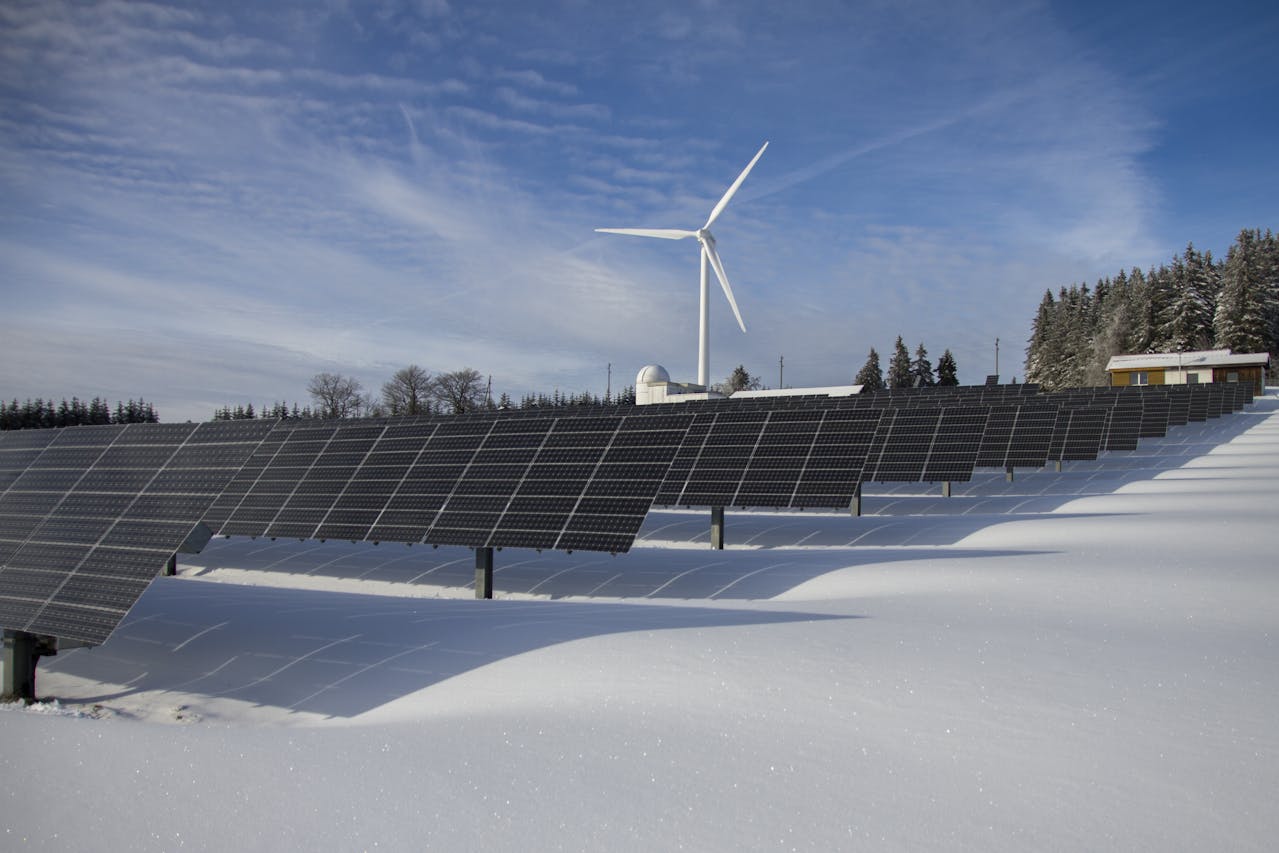When people talk about “renewable energy,” many still think only of solar and wind power. But in 2025, the energy landscape has evolved far beyond that. In fact, renewable energy now plays a central role in global energy transition, public policy, and innovation.
So what exactly falls under the types of renewable energy today? Let’s take a closer look at the key types and their current development based on the latest 2025 data from the US, UK, and beyond.
Main Types of Renewable Energy
✅ 1. Solar Energy: Powering Homes and Businesses
Solar remains the most mainstream form of renewable energy worldwide.
- In the US, installed solar capacity exceeded 180 GW by 2025, with 29% coming from rooftop residential systems.
- In the UK, residential solar installations grew 37% year-over-year in 2025.
- Trends: Modern panels now achieve 24%–26% efficiency, and solar + battery storage systems are becoming the new standard for homes and businesses.
- Incentives: The US Inflation Reduction Act extends a 30% federal tax credit, while the UK offers up to £7,000 in installation subsidies for low-income households.
✅ 2. Wind Power: Offshore Wind Is Booming
Wind energy—especially offshore wind—has become a pillar of the renewable mix in Western countries.
- In 2025, the US added over 12 GW of offshore wind capacity, focusing on Massachusetts and New York coastlines.
- The UK led the world with 14 GW of new offshore wind installations.
- Tech Trends: Floating wind turbines now enable power generation in waters deeper than 50 meters.
- Challenges include environmental concerns like bird migration, but AI-powered wind farm management is helping mitigate these issues.
✅ 3. Bioenergy: More Than Just Burning Waste
Often overlooked, bioenergy holds significant promise, including biomass power, biogas, and biodiesel.
- In Germany, bioenergy made up 8% of all renewable electricity by 2025.
- The US Midwest is investing in converting agricultural waste into biomethane.
- Tech Developments: Upgraded biogas can now be injected into natural gas grids as a clean alternative.
✅ 4. Geothermal Energy: Silent But Powerful
Geothermal is less flashy but offers steady, 24/7 output, making it a valuable resource.
- In the US, California and Nevada remain geothermal strongholds.
- In Europe, countries like the UK and France are exploring mid-temperature geothermal for district heating.
- Nordic nations are now using geothermal + heat pump combos in entire residential communities.
✅ 5. Hydrogen Power: The Next Big Thing?
Hydrogen energy, especially green hydrogen (produced via electrolysis powered by renewables), is moving from concept to implementation.
- US programs, backed by the Infrastructure Investment and Jobs Act, are building Clean Hydrogen Hubs.
- EU targets include 10 million tons of green hydrogen annually by 2030.
- Early applications include long-haul trucks, shipping, and high-heat industrial uses.
✅ 6. Ocean Energy: Still in the Lab, But Promising
Tidal, wave, and thermal gradient energy represent emerging technologies still in pilot stages.
- The UK has launched the world’s first commercial tidal energy demonstration zone.
- Canada’s British Columbia is testing wave-powered stations, and Norway is exploring deep-sea thermal power.
- While not yet scalable, ocean energy adds to global energy diversification efforts.
✅ 7. Next-Gen Nuclear: Small Modular Reactors (SMRs)
Though controversial, some countries now categorize advanced nuclear as part of the clean energy mix.
- SMRs are gaining traction due to compact design and safety features.
- The US-based NuScale secured the first SMR commercial license.
- The UK is investing £2 billion into Rolls-Royce’s SMR project.
✅ Summary: Renewable Energy Is the New Standard
By 2025, renewable energy is no longer a “backup plan” but the main driver of global energy systems. From electricity to transportation, from heating to industrial processes, we are witnessing a comprehensive transformation.
The future of energy won’t rely on a single solution—but a synergistic mix of technologies. Our job is not just to support renewables, but to understand their diversity and participate in shaping a sustainable energy ecosystem.
✅ FAQs
Q1: Which renewable energy source is the most widely used in the world today?
A1: Solar energy remains the most widely deployed renewable source globally, due to falling costs and ease of installation.
Q2: Is hydrogen energy truly clean?
A2: Only green hydrogen, produced using renewable electricity, qualifies as clean. Grey or blue hydrogen still involves fossil fuels.
Q3: Why are SMRs considered part of renewable energy by some governments?
A3: While not technically renewable, SMRs are low-emission and sustainable over long cycles, which fits into some countries’ carbon neutrality plans.
Q4: How do governments support renewable energy adoption?
A4: Through tax credits, subsidies, zero-emission zones, and net metering policies.
Q5: What is the biggest challenge facing renewable energy growth in 2025?
A5: Grid integration and energy storage remain major bottlenecks, especially as intermittent sources like solar and wind expand.



